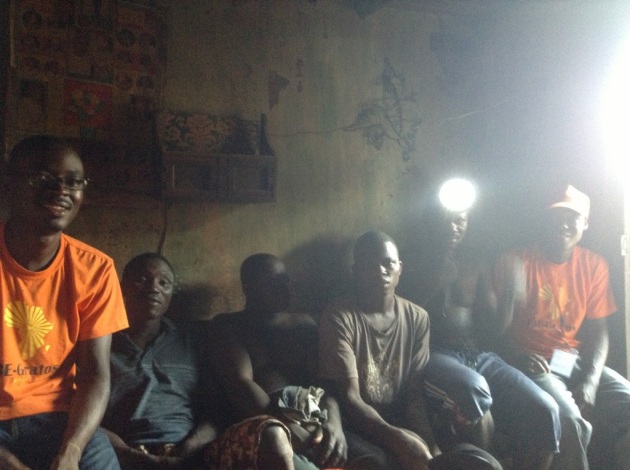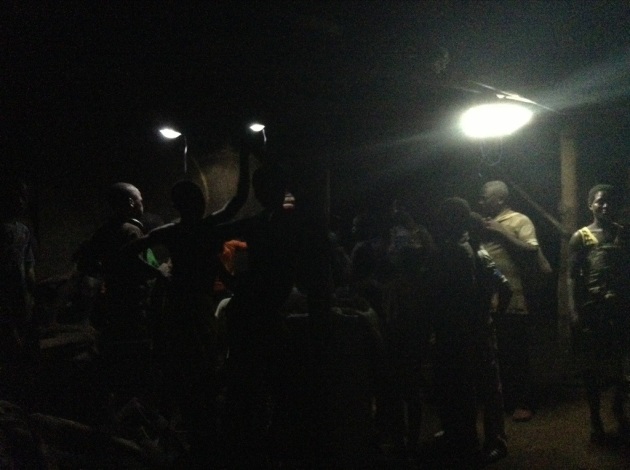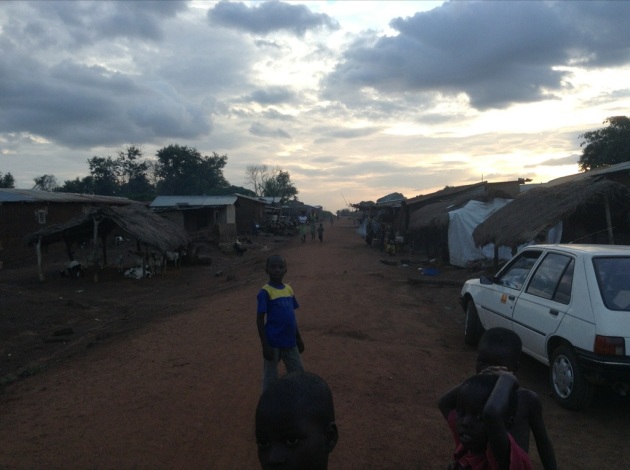Yesterday afternoon, Solar Benin Energy traveled to Aglamidjodji, a small village about half an hour away from Savalou, the capital of the Colline region in Benin and the seat of Novi headquarters. We brought a 7-lamp system and a 2-light system, and went to take the first step in our distribution strategy – visiting the village, talking to the village leaders as well as showing our products to everyone. We went first to the C.A. (Chef D’Arrondissement), who was very receptive, and saw the need for an energy alternative as much as we did. A hunter was there, who joked about using it as a headlamp, which could potentially be feasible, since after charge the lamps are powered only by the battery.

After talking to the C.A. and getting permission to work further with the village, we set up the 7-light system. A crowd gathered, both watching and asking questions. We set it up while the sun was still up, and then left to visit more parts of the village. When we came back, it was a stunning sight in this completely dark village. We had only set up three lights, but it was amazing what those three lights did.

In addition to light, people often ask about solar-powered televisions, fridges, and fans. Those products are not available in Benin yet, but they exist and are going to be coming soon. For me, it was an example of assuming, and not listening to, people’s needs. I had assumed that light and phone charge must be the most important, but many people are relatively uninterested in that aspect and want only a television that doesn’t have to run on a generator or drive the electricity bill up. Being able to serve all energy needs is important, especially as energy demand increases. If the whole demand can be met by solar, there never needs to come a resource crunch when whatever non-renewable source is being used runs out. But for many people, light is first priority.
Another thing we saw was a lot of battery-powered lights. To me they seemed a lot safer than kerosene, but I was told that they have mercury in them, which is getting into the ecosystem and making shrimp inedible. Benin now imports its shrimp. Thinking about the repercussions if al of the different energy sources is fascinating, especially in light of US energy consumption. Here, since there is such a lack of viable options, it seems like renewable energy has a chance. But what about in countries with a more entrenched way of dealing with energy demand?
This time of year, it is the women who have the financial resources to invest in solar systems, because they have finished transforming manioc into gari, a ubiquitous grain here. The men’s incomes will come in January and February. Therefore, we’re going to concentrate on the women, which is exciting. It’s interesting when women are the ones who have the purchasing power, since in so many situations they have no power whatsoever.
We will be coming back a few days before market day next week, to recruit information agents to spread awareness on market day, when the whole village comes out. From there, we will pick a sales agent, and train technicians. It will be great to return!
Author: Idun Klakegg
